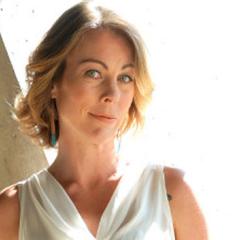Dr. Kimberley Miner: #IfThenSheCan Women in STEM Ambassador
In early March, a life-sized statue of Switzer Fellow Dr. Kimberley Miner (pictured above, left) was stationed at the Smithsonian gardens, along with more than 120 women leaders in STEM. The exhibit is part of the AAAS IF/THEN® Ambassadors program, designed to further women in science, technology, engineering and math (STEM) by empowering current innovators and inspiring the next generation of pioneers to pursue STEM careers. Students attended a Futures Career Day kick off event where they got to speak directly with Kimberley and other inspiring Ambassadors, alongside their statues.The Smithsonian exhibit runs through March 27, 2022.
In honor of Women’s History Month, we spoke with Kimberley about her experience as an Ambassador and what she’s been working on lately as a climate scientist at NASA. The following interview has been edited for length and clarity.
Switzer Foundation: Tell us about the IF/THEN® program.
Dr. Kimberley Miner: It is a way to champion women of diverse backgrounds and sciences, so that little girls can see them and know they can be women in STEM too. It’s focused on people who identify as women, but it is a benefit to all youngsters to have these role models.
IF/THEN® has sponsored lots of activities including the CBS Mission Unstoppable tv show, YouTube videos, write ups and more. They also provided Ambassadors with mini grants; we each got $10,000 to spend however we wanted for STEM outreach. I did outreach on YouTube, and worked with Story Collider. Other Ambassadors created playing cards and board games about women in STEM. It's a really successful initiative.
The ‘get’ for all of us Ambassadors was, for the first time in our lives, to connect with people who were like us, who have the same story of challenges and successes in higher education and our careers. It is an indispensable network.
Switzer: Did you have role models that were women in STEM that inspired you?
Dr. Miner: Before, I would have said no. Since IF/THEN®, I realized the power of pop culture role models. Turns out, all of my favorite movies were about women in STEM.
My role models were Jodi Foster in the movie Contact, playing Carl Sagan’s heroine Ellie Arraway going into space. Also, Dana Scully in the X-Files; the Scully effect is alive and well with me! And in the movie Twister, Helen Hunt is an atmospheric sciences professor.
Growing up in the 80’s, that was it. There was not a lot of attention being paid to women who were fighting their hearts out in that field.
Switzer: Has your work with IF/THEN® surprised you in any ways?
Dr. Miner: It has been surprising to see that there were already so many women of diverse backgrounds who were in this field making a difference. They were not getting visibility, so I didn’t know about them. It was honestly a shock.
It reworked our worldviews. A lot of us walked away completely changed in how we think about women and underrepresented genders in science and advocacy for science. It has helped us personally a lot, and now this network is another tool for us to use when advocating for women in the sciences.
Switzer: You were a STEM Superstar at Comic Con as part of IF/THEN®. What was that experience like?
Dr. Miner: That was so cool! It was in November, and it was the first thing we got to do as Ambassadors in person since the pandemic. We all dressed up related to our work; I wore a glacier dress. The convention overall was really small because of the pandemic. It was only open to residents of Southern California, so it was intimate and it felt safer. It also meant the kids weren’t drowned out, they were really seen.
I was shocked that so many people came to our panel, over 250. We had educators come, we had young people come. There was a little boy who asked us so many great questions. It was another great opportunity to connect with a bunch of different kinds of people who are engaging with science on a day to day basis and may not realize it. Like the video games they’re playing, science built them!
Switzer: What are you working on these days at NASA?
Dr. Miner: I’m working on two main projects. The first is studying changing dynamics of the arctic, with a focus on permafrost. It’s called the Arctic Methane Permafrost Challenge, and it’s a partnership with the European Space Agency. We’ve published a few papers recently.
The second is a science systems engineering project, collecting data on surface biology and geology via satellite. We’re working with international partners, nonprofits and state agencies to send satellites into lower orbit to observe the earth at the finest resolution and smallest scale we’ve ever attempted. We’re going to get the most detailed and up to date information on the planet we’ve ever had. A bunch of different communities are involved; such as oceans, aquatic, terrestrial, vegetation, geology, including volcanology. Everyone has something different to learn.
Because this is new data, we have to figure out how often we need to look at things to get the full perspective of seasonal and annual changes. Someone will be camping out in Santa Barbara for the whole spring, I’ll be taking the first swing next week. It’s my first field work since the pandemic, and it’s in one of the most beautiful places.

